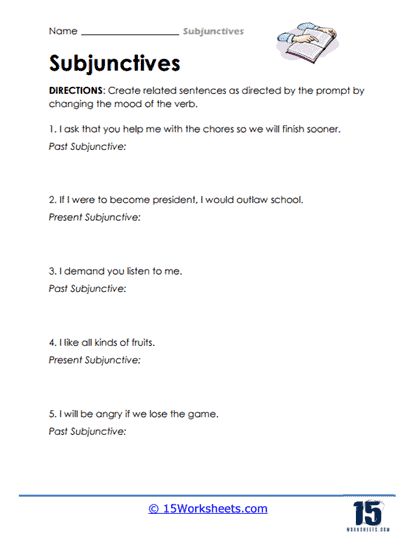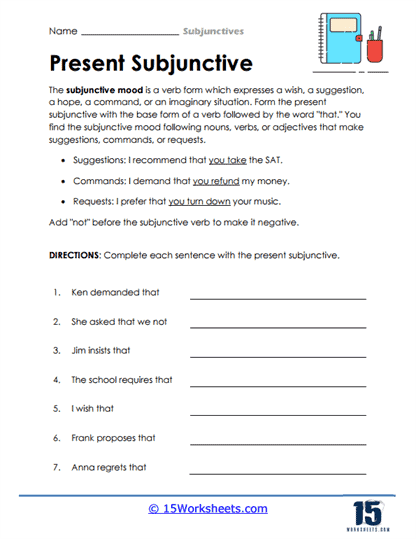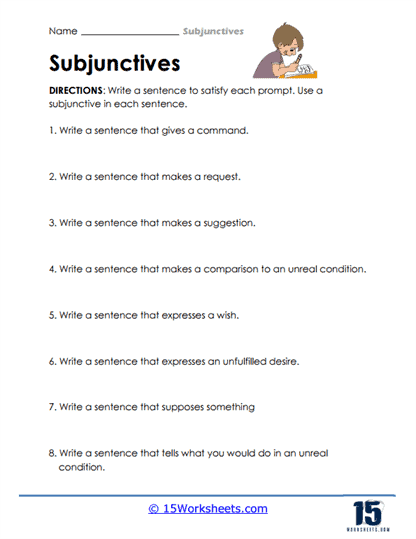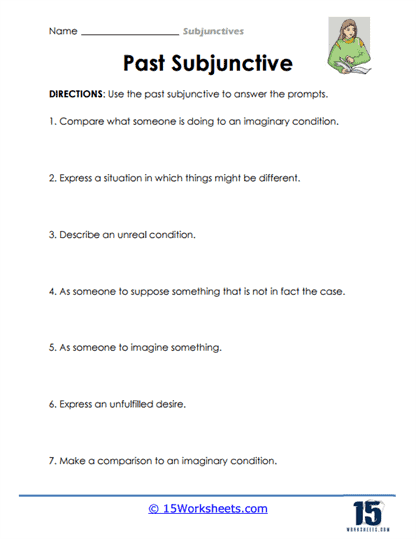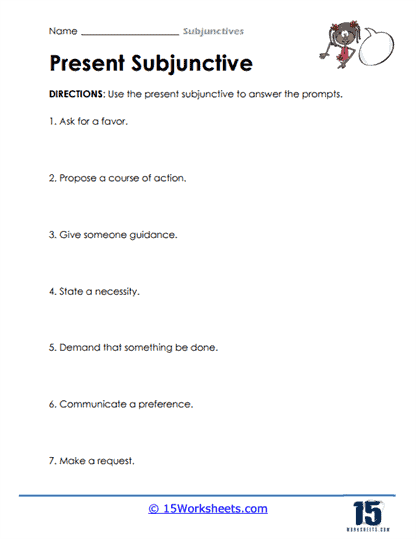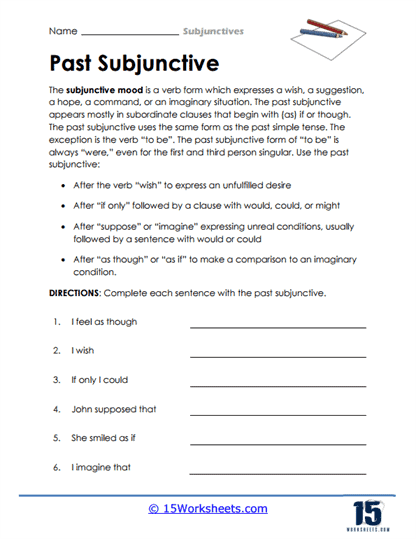Subjunctives Worksheets
All About These 15 Worksheets
This collection of Subjunctives worksheets can help students to understand and use the subjunctive mood in English grammar. The subjunctive mood is a verb form that expresses various states of unreality or possibility, including wishes, suggestions, demands, and hypothetical situations.
These worksheets include a range of exercises such as fill-in-the-blank exercises, rewriting activities, or short writing prompts. Through these worksheets, students will:
- Identify the correct verb form for sentences;
- Spot errors in sentences with incorrect usage of the subjunctive mood;
- Understand the forms of the present subjunctive and the past subjunctive;
- Distinguish the difference between the subjunctive mood and the indicative mood;
- Answer writing prompts that demonstrate a deep understanding for the form, function, and proper usage of the subjunctive mood;
- Create their own sentences in the subjunctive mood in varying contexts;
- And understand how the various forms of the subjunctive mood can convery several meanings.
By providing students with a variety of exercises and prompts, these worksheets can help students to understand the proper use of the subjunctive mood and enhance their writing and communication skills. As using the subjunctive mood correctly can add nuance and clarity to written and spoken communication, it is vital that students develop a deep understanding.
What are Subjunctives and its forms?
In English grammar, subjunctives are a type of verb form that express hypothetical or non-factual situations. They are used to talk about things that are not necessarily true or real, but rather something that is wished, imagined, or hypothetical. There are two types of subjunctives: the present subjunctive and the past subjunctive.
The present subjunctive is used to express suggestions, commands, or requests, or to describe hypothetical or unlikely situations in the present or future. It is formed by using the base form of the verb (without “s” or “es” for third-person singular).
Example:
- I suggest that he go to the doctor. (“go” is the present subjunctive form of “goes”)
- It is important that she be here on time. (“be” is the present subjunctive form of “is”)
The past subjunctive, also known as the subjunctive II or the past subjunctive mood, is used to talk about hypothetical or unreal situations in the past. It is formed by using the past tense form of the verb, without the -ed ending for regular verbs.
Example:
- If I were rich, I would travel the world. (“were” is the past subjunctive form of “was”)
- If she had studied harder, she would have passed the exam. (“had studied” is the past subjunctive form of “has studied”)
Note that in modern English, the past subjunctive is often indistinguishable from the past tense form of the verb. However, in some cases, the use of the past subjunctive form is still considered more appropriate or correct in certain contexts.
Subjunctives vs. Indicatives
In English grammar, the subjunctive mood and the indicative mood are two of the most commonly used verb moods. The indicative mood is used to express factual statements or questions, while the subjunctive mood is used to express hypothetical or non-factual situations, such as wishes, doubts, or suggestions.
The indicative mood is used to make statements of fact or ask questions. It is used when we want to make a statement or ask a question that is based on reality or facts. In the indicative mood, the verb form changes based on the tense of the sentence.
Example in present tense:
- She speaks Spanish fluently. (“speaks” is the indicative present tense form of “speak”)
Example in past tense:
- He studied for three hours last night. (“studied” is the indicative past tense form of “study”)
In summary, the indicative mood is used for factual statements or questions, while the subjunctive mood is used for hypothetical or non-factual situations.










